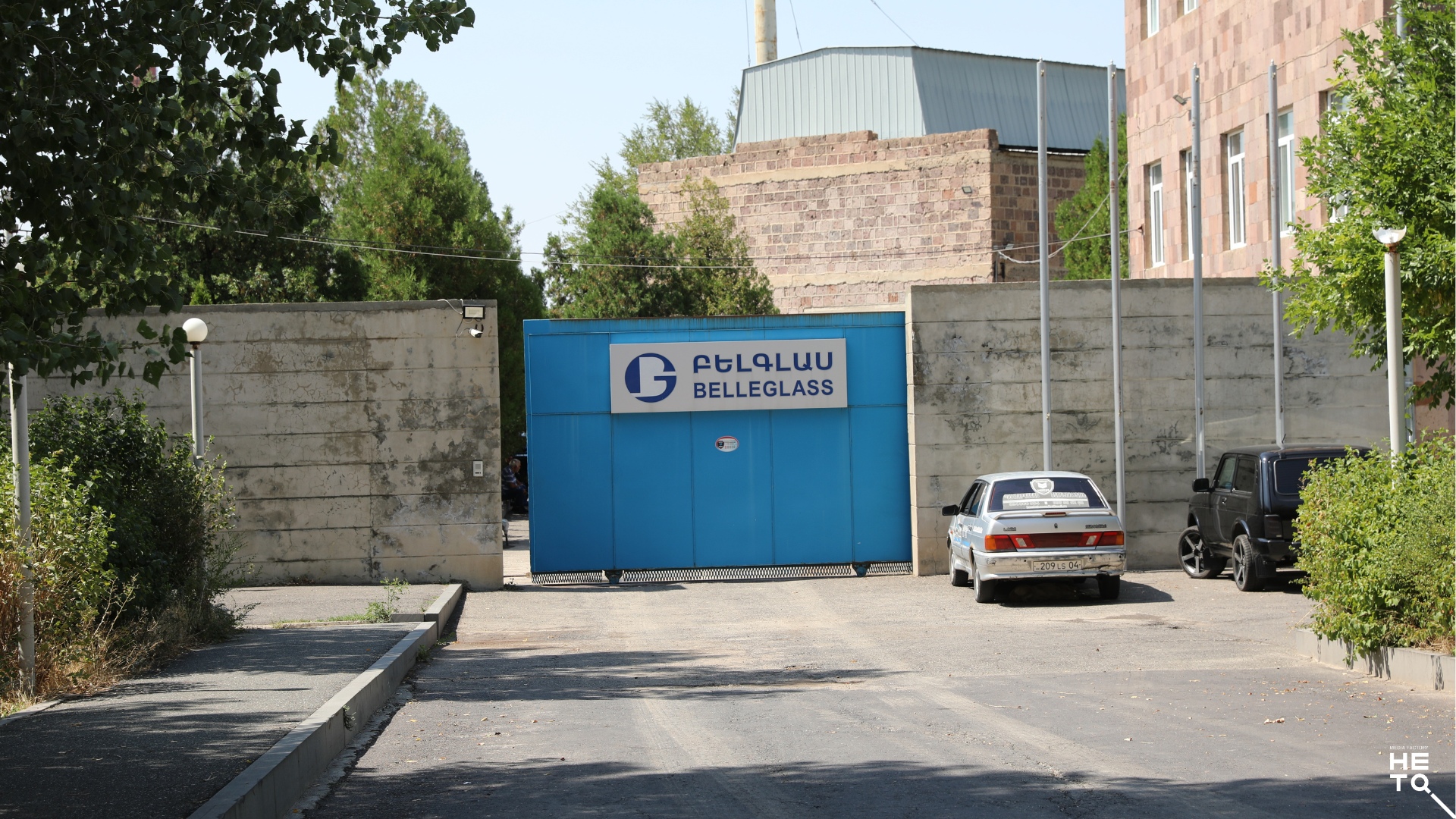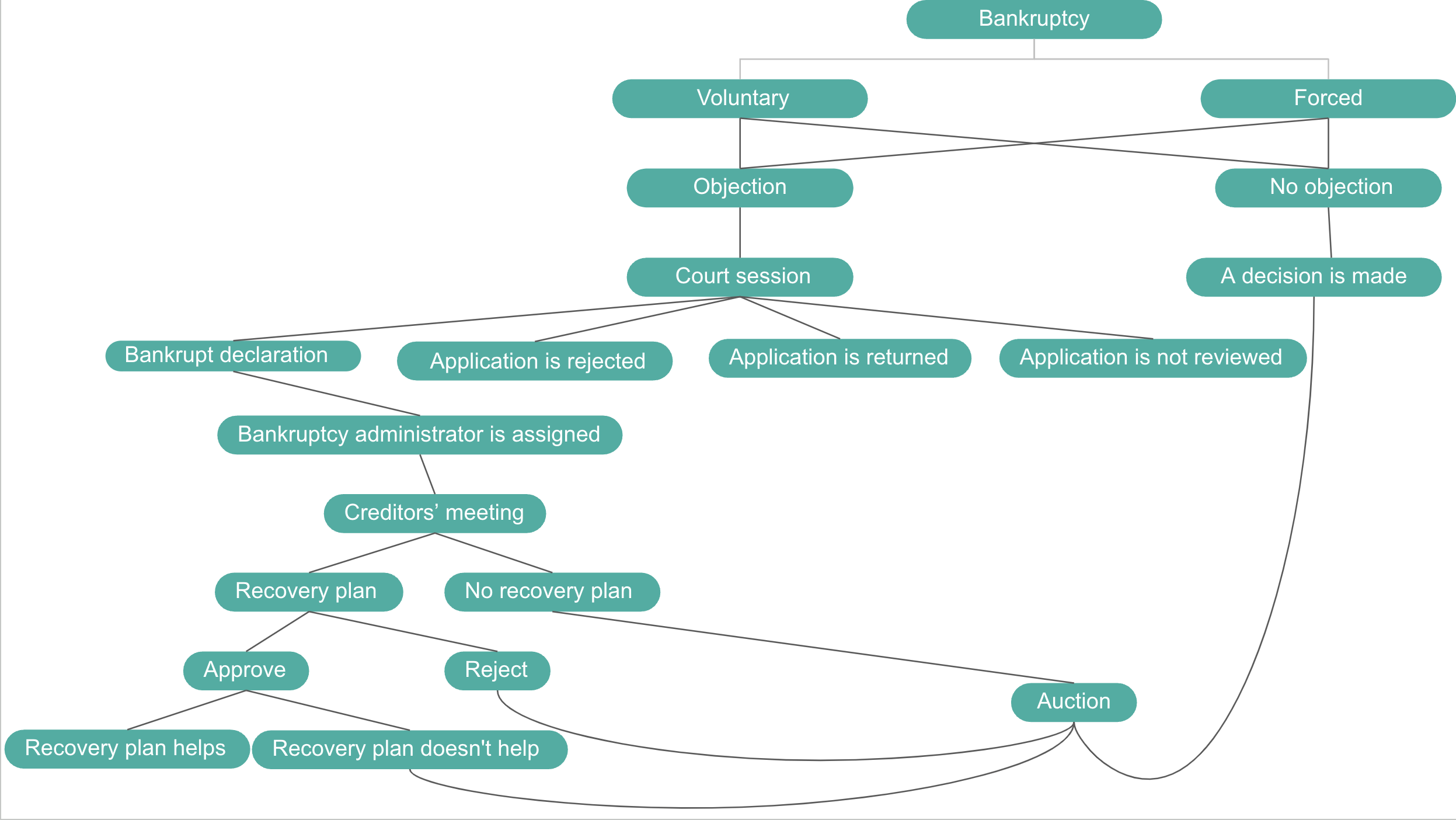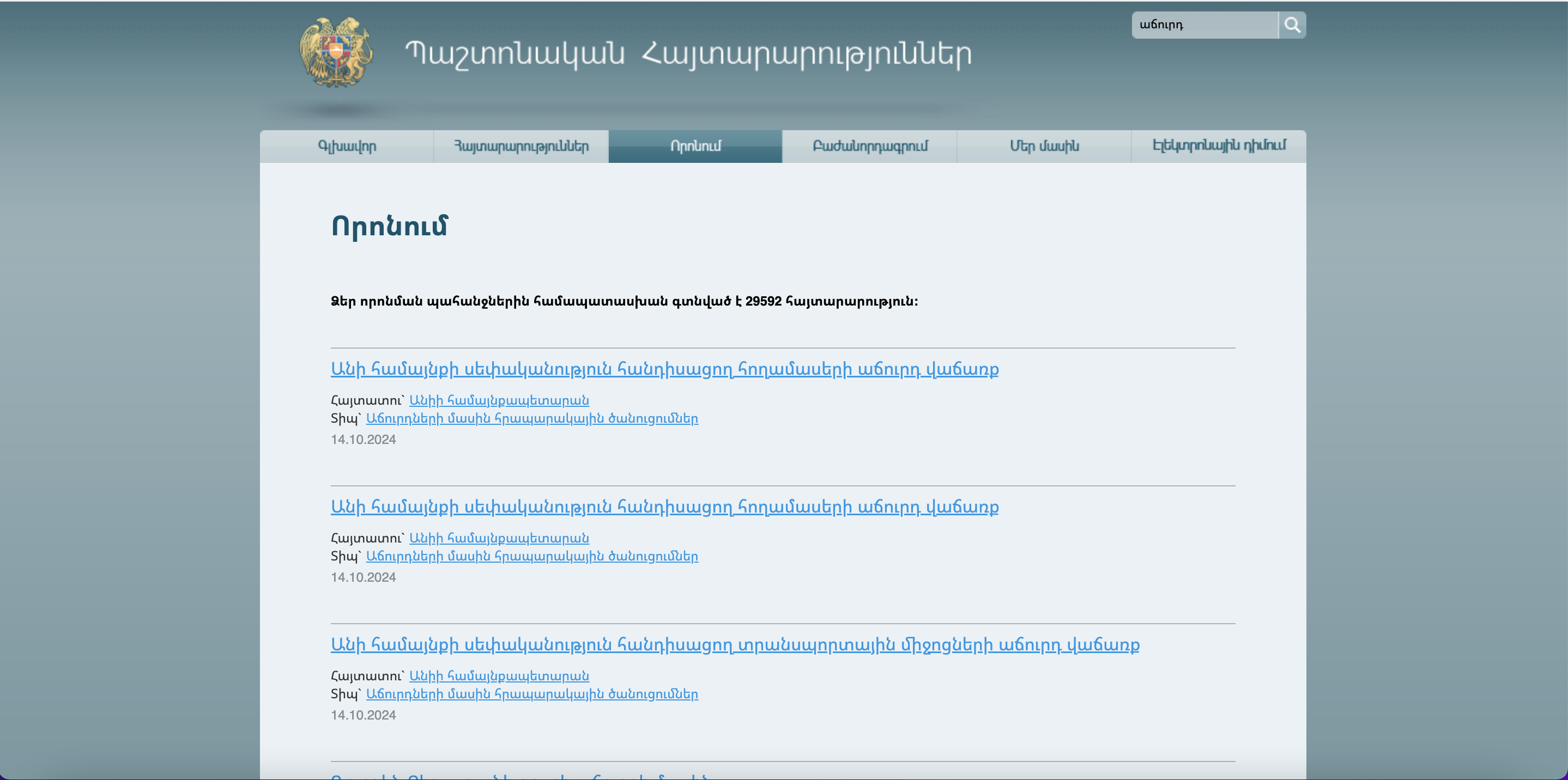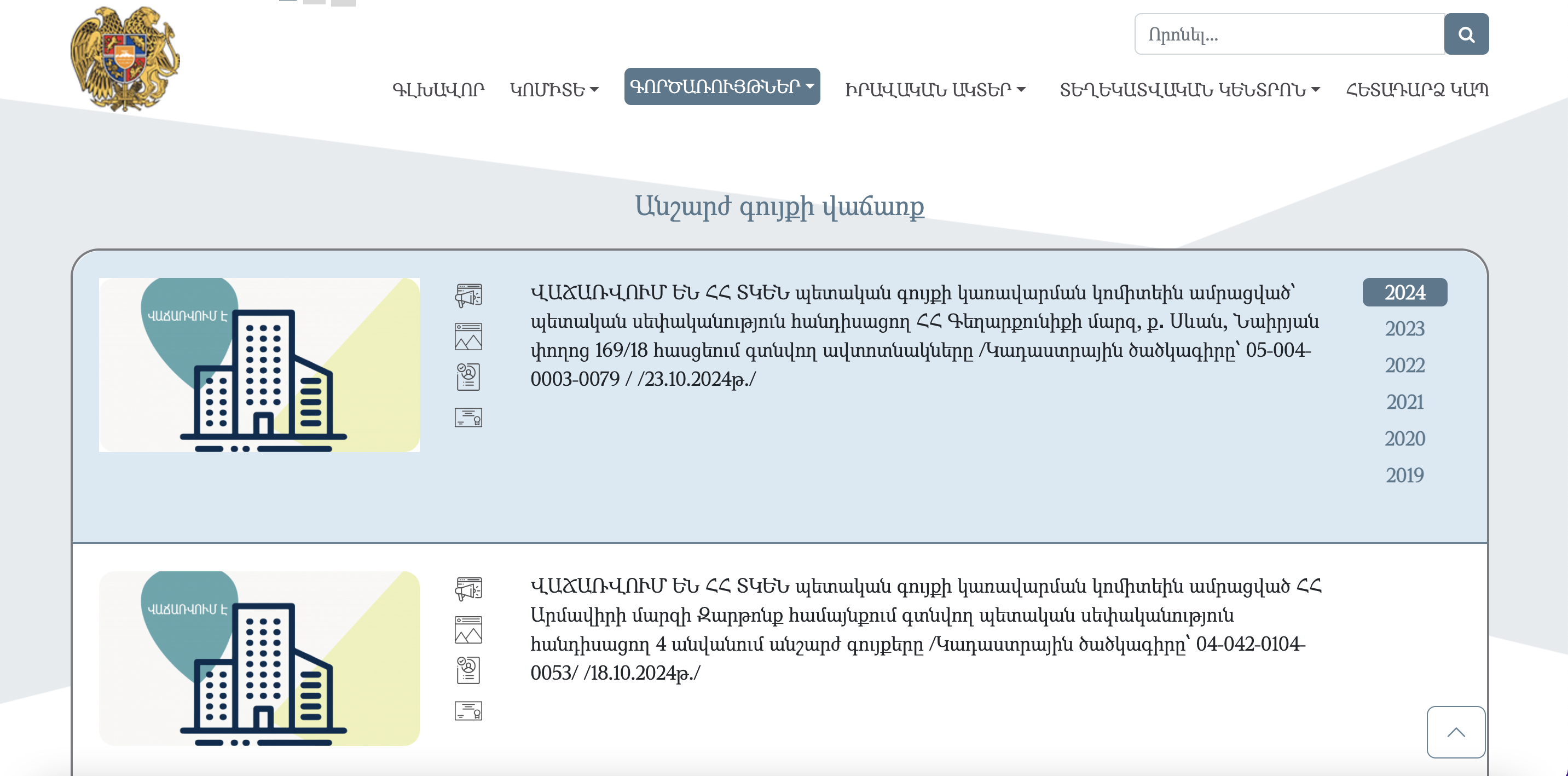Bankruptcy: a Functioning Business with a Dysfunctional Mechanism Where One Person's Loss Becomes Another's Gain
On December 15, 2023, the Supreme Judicial Council granted the Prosecutor General’s request to revoke Judge Tigran Poladyan’s judicial immunity. The following day, December 16, Poladyan was arrested on charges of accepting a particularly large bribe.
The story began in 2015 when Armenia's leading glass container manufacturing factory faced a financial crisis. As a result, the factory owner, “Glass World Company,” was unable to repay its loan from "Optiling Holdings" LLC, a British Virgin Islands-based company. Consequently, “Optiling Holdings” LLC filed a court request to declare the “Glass World Company” bankrupt. That same year, the company was officially declared bankrupt, and Tigran Harutyunyan was appointed as the bankruptcy administrator (the role of bankruptcy administrators will be explained below). Following the bankruptcy ruling, a list of creditors was created.
This case was handled by the same Judge, Tigran Poladyan, for eight years until he was arrested in 2023 on charges of accepting bribes.
The debtor, opposing several court decisions following its bankruptcy declaration, appealed first to the Court of Appeals and then to the Court of Cassation, but without success. In 2018, the court decision came into force, and the sale of the bankrupt company’s assets began. The auction aimed to use the proceeds from the sale to cover the factory's accumulated debt. Among the assets put up for sale was "Glass World Company's" 10.6-hectare plot of land with buildings located in Byureghavan, Kotayk region, with a starting price of 350 million 468 thousand AMD.
In 2019, the Bankruptcy Court was established in Armenia, and the case concerning the bankruptcy of the glass container factory was transferred to it. Judge Tigran Poladyan moved from the Court of General Jurisdiction to the Bankruptcy Court and continued to oversee the case.
Seven years after the bankruptcy declaration, "Belleglass" LLC won the auction in 2022. However, the company failed to make the required payments on time, resulting in the auction being deemed incomplete.

According to the Prosecutor's Office, in 2023, the owners of "Belleglass" LLC, which had won the auction, met their friend Karapet Guloyan, the son-in-law of well-known businessman Gagik Tsarukyan. Guloyan's wife, Gayane Tsarukyan, is one of the four shareholders of "Belleglass," along with Arash Nosratialmandari, Garegin Mkrtchyan, and Ani Melikyan. During the meeting, Guloyan remembered that he was acquainted with Tigran Harutyunyan, the bankruptcy administrator handling the case, and promised to resolve the issue by facilitating the sale of the property and dividing the proceeds.
Karapet Guloyan met the bankruptcy administrator, Tigran Harutyunyan, who, in turn, spoke to the judge overseeing the case, Tigran Poladyan. Harutyunyan proposed a plan to the judge according to which the court would annul the previous auction and schedule a new one. "Belleglass" LLC, which had won the earlier auction but failed to make the payment, would appeal the court's decision. The judge was expected to approve this appeal, allowing "Belleglass" to pay the amount it was previously unable to pay and acquire the auctioned property. Judge Poladyan requested $150,000 to facilitate this arrangement, which would be paid in installments. The indictment does not specify what share the other parties involved would receive.
On December 12, 2023, Karapet Guloyan bribed Tigran Harutyunyan with $20,000, who then passed the money on to Judge Poladyan the same day. Law enforcement uncovered this bribery case, investigated it, and sent it to court with an indictment.
During the September 13, 2024 session of the Anti-Corruption Court, defendants Arash Nosratialmandari, Garegin Mkrtchyan, and Karapet Guloyan stated that they had no comment on the indictment, while former bankruptcy administrator Tigran Harutyunyan pleaded not guilty to the charges against him. The court decided to hear the suspended judge, Tigran Poladyan, at the next session.
This case prompted us to investigate how the bankruptcy process works in Armenia, identify any loopholes, and assess whether the auction process for expropriating the assets of bankrupt companies is transparent.
The path to bankruptcy
The bankruptcy process is initiated when either an individual files for bankruptcy voluntarily or when a creditor files a petition for bankruptcy against him.
"The goal of declaring bankruptcy is to restore balance in the relationship between the debtor and the creditor," explains Tigran Stepanyan, a bankruptcy administrator.

After receiving the application, the court may:
- declare the individual /organization/ bankrupt,
- return or reject the application.
In case of the first option, a bankruptcy administrator is assigned to the case, a meeting of creditors is called, and a decision is made on whether to propose a recovery plan.
A recovery plan can be proposed by either the creditors or the bankruptcy administrator. Approval of the plan requires the consent of the creditors' meeting. In 2023, out of 2,550 entities declared bankrupt, only 49 were presented with a recovery plan, and just 20 of those plans were approved.

If the recovery plan is not approved, the bankruptcy administrator begins to inventory the assets of the bankrupt entity.
"Experts with the necessary qualifications evaluate the assets, determine their market value, and then they're put up for auction and sold," explains Tigran Stepanyan, a bankruptcy administrator. "However, the original owner has an advantage: he can buy back his own asset by simply paying the starting price. I believe this is fair, as it's always preferable to avoid completely stripping someone of his property," he concludes.
Bankruptcies have been on the rise in recent years. Last year, a total of 2,550 individuals and entities were declared bankrupt, with 80% of those being natural persons.
"Bankruptcy proceedings for legal entities and natural persons have specific distinctions. While a legal entity can be liquidated as part of bankruptcy proceedings, a natural person cannot, of course," bankruptcy administrator Tigran Stepanyan explains.
After negotiating with the bank, legal entities that have taken out loans and missed their payment deadlines can sometimes defer their repayment dates. However, this rarely happens for natural persons.
"I believe that individuals need more legal protection because the leaders of legal entities are generally experienced businesspeople with financial literacy and acumen, which isn't always the case for individuals," says Tigran Stepanyan.
Arsen Chitchyan, Chairperson of the Observer Board of the Self-Regulatory Collegial Organization of Bankruptcy Administrators, states that financial resources are the key requirement for submitting a recovery plan.
He states, “No bank in Armenia will provide funding to a company that is going bankrupt. Banks require collateral to approve loans, and most bankrupt companies do not have any collateral assets left.”

Arsen Chitchyan rules out any possibility of a bankruptcy administrator intervening in the auction process. The auction is held online, allowing anyone to apply, make a 5% advance payment (capped at 5 million AMD) to a designated bankruptcy account, and participate. Losing bidders have their money returned.
A citizen who wished to remain anonymous shared another perspective. Based on personal experience, he claims there are numerous risks of illegality in the bankruptcy process, beginning with property valuation.
“Often, appraisal companies work closely with bankruptcy administrators and assess properties as they see fit. For instance, when they were supposed to appraise my store in the city of Abovyan, the appraiser failed to locate the address and assessed a different store instead. When I pointed out in court that the appraised store was not mine, the judge responded that it made no difference since both stores were located in Abovyan.
At times, properties are intentionally undervalued so that associates can acquire them at a low price, while in other cases, they are overvalued to maximize profit from the sale”.
In the first auction, the price of unsold real estate is reduced by 10%, movable property by 20%, and unsold gold or diamonds are discounted by 2-3%.
What is the process for selling auctioned property?
If you're interested in buying property through an auction, you might wonder where to find it. Searching social media or using keywords on government websites or search engines won't be fruitful.
You can find information about the auctioned properties of bankrupt legal entities and individuals on the Azdarar.am website, a platform for official announcements created by the Ministry of Justice. However, you're unlikely to find what you're looking for even with patience and persistent searching. For instance, a search using the keywords "auction Glass World Company" yields over 105,000 results. There is an impression that the auctioned product is hidden from the potential buyer.

In contrast, you can quickly locate announcements for movable and real estate auctions on the websites of other government agencies. For instance, the State Property Management Committee has a dedicated section for auctions on its website, where each listing includes images of the properties for sale. Additionally, the Committee shares auction announcements on its Facebook page, enhancing information dissemination. The Committee also records the auctions on video.



You can also find information about auctioned properties relatively quickly on the Compulsory Enforcement Service website, where photos are included with the announcements.
Limited access to the Azdarar.am website is not the only challenge when it comes to purchasing real estate at auction. Auctions are held at the Collegial Organization of Bankruptcy Administrators, where only the bankruptcy administrator and bidders who have made an advance payment are allowed to attend. Furthermore, the auctions are not recorded on video.
In other words, the assets of bankrupt individuals and entities are sold in a narrow circle and behind closed doors.
The non-functional electronic bankruptcy system
On June 15, 2021, the Ministry of Justice awarded a contract worth over 172 million AMD to the "Harmony" Fund to develop an electronic bankruptcy system. This system was expected to make the bankruptcy process more transparent and accessible to everyone. The Ministry of Justice has informed us that the project is now complete and has been accepted by the Ministry.
However, the electronic bankruptcy system is currently non-functional. The Ministry's written response to us requires no further comment: “The primary challenge affecting the functioning of the electronic bankruptcy court module and other court systems is the technical issues with the current “Court System” (“CAST”) program. This program is outdated and lacks the necessary capabilities for smooth interoperability. Additionally, the server infrastructure of the Supreme Judicial Council department was damaged due to water leakage. Solutions are currently being developed to address these issues systematically.”
The Ministry of Justice also indicated that, based on the Digitization Council's decision, the "Information Systems Agency of Armenia" foundation is now responsible for the current stage of work on the electronic bankruptcy system.
On March 26 of this year, Grigor Minasyan, the Minister of Justice (now former minister), stated during a National Assembly Standing Committee on State and Legal Affairs session that the electronic bankruptcy system was in the testing phase and would be launched soon. However, the system is still not functioning over six months later, and its launch date remains uncertain.
In 2019, the Government of Armenia, with support from the United Kingdom Government's "Good Governance Fund," committed to ongoing reforms of the bankruptcy system. The implementation of this system is part of that initiative.
In fact, the Ministry of Justice spent 172.8 million AMD on a non-functional system due to technical issues not accounted for beforehand. This raises concerns that, even after its eventual launch, new problems might emerge, requiring further investment and the development of a new system to address the shortcomings of the previous one. Until then, the bankruptcy process will continue to lack transparency, allowing millions of drams to be laundered.
This investigation was conducted within "Student Journalism Investigations" project by "Investigative Journalists" NGO with the support of the Friedrich Naumann Foundation for Freedom South Caucasus Yerevan Office.
The views and opinions expressed in this investigation do not necessary reflect the position of the Friedrich Naumann Foundation for Freedom and its employees.

Authors
Students
Lilit
Grigoryan
Students
Armen
Ghazaryan
Instructors
Instructors
Tirayr
Muradyan
Instructors
Edik
Baghdasaryan
Instructors
Garik
Harutyunyan
Instructors
Mariam
Barseghyan
Team
Team
Harutyun
Mansuryan
Team
Lilit
Tarkhanyan